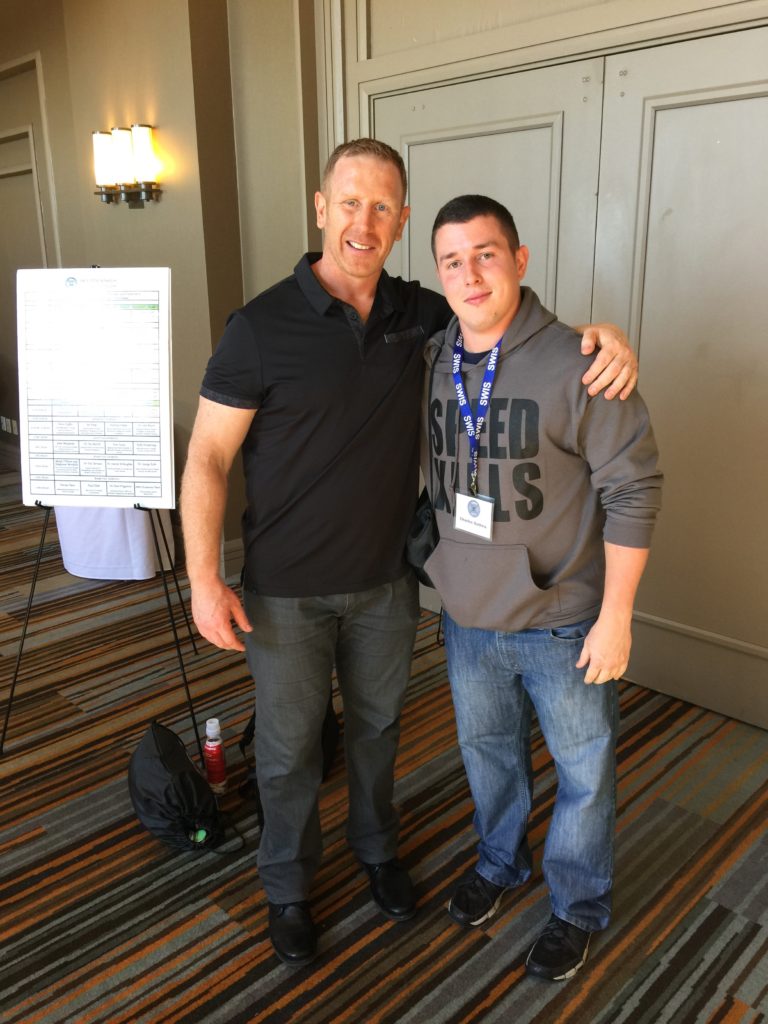
After training people for about a year-and-a-half, I finally decided to attend my first seminar in October 2015. I was still very new in this field and did not know what I did not know. Turns out, the first seminar I attended was THE seminar, the SWIS Symposium. This is where not only the best of the best go to speak, but they go to learn. I was swimming in the deep end of the pool with no float.
At SWIS, the first presentation I sat in on was by Matt Nichol. Little did I know that at 8 a.m. that Saturday morning I was going to learn a lesson from Matt’s presentation that would stick with my to this day. I’ll admit, it’s hard to retain everything you hear at these seminars because of the sheer volume of information you get, especially at a conference like SWIS. SWIS is the equivalent of jamming in 10+ Master’s level classes in one weekend. But, whenever I find myself in tough situation training someone or feeling like I’m not worthy of doing the job, I always go back to what Matt said during this presentation.
Matt talked about not being able to “see the forest through the trees.” He mentioned how there is so much information out there that it can bog you down and not allow you to see the forest through the trees. This was a message I needed to hear because I was already overwhelmed and the event just started.

In training terms, when your athlete is faced with an issue that you need to address, you need to stay in your lane. You need to come up with the best solution based on what you see and what you know. This isn’t the time to start using assessments and exercises that you briefly saw online and heard were good. You shouldn’t be trying to mimic things you’ve seen other top coaches do that you don’t fully understand because you won’t do it properly and it will only complicate things. See what you see and use what you know.
I needed to hear this, especially as I continue to learn more and more from other coaches. I have been guilty in the past of trying something new out that I thought would work because I saw another great coach use it. The problem was that I didn’t fully understand it and wasn’t able to utilize it effectively.
As beneficial as it is to learn from the best, it’s also created doubts in my head. I wonder if I’ll ever be able to be half the coach that some of these coaches are. It can be demoralizing when you see the top coaches showing the tremendous progress they’ve made with an athlete in a short period of time. It led to me questioning myself on whether I can really do this or not. I kept looking all the way to the top of the mountain and it clouded me and stopped me from embracing the small victories. If a client added 5-10 pounds to a PR, I questioned to myself why it wasn’t a 20-30 pound PR instead of just being happy that progress was made. No matter what happened, it wasn’t good enough for me and I felt like I was letting people down.
It used to really eat at me. It still does at times, but not as much. I refer back to what Matt said, “see what you see, use what you know.” Now, when I learn something new that I know will be helpful to my athletes, I don’t incorporate it until I have a solid understanding of it. I don’t completely change the program because I learned something new over the weekend.
I don’t compare myself to other coaches and only focus on becoming the best version of myself. It sounds cliche, but, at the end of the day, I’m not competing with any of these coaches so it doesn’t really matter if I am at their level yet. I just need to keep taking strides forward so I can continue to close the gap. This past year has shown me that sticking to a long-term approach, making the small fixes, sticking to what I know and learned and embracing the small victories will lead to the major improvements in performance that I am seeking.